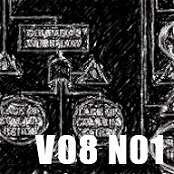Abstract
With urban growth, electricity and heat production may not be enough to meet new demands. The urban form can promote possibilities of alternative energy generation in the cities. This work verifies the potential of wind energy use in cities from a simplified methodology that involves qualitative analyses of the urban form and quantitative meteorological data for Goiania. The method is characterized by the following steps: a) Selection of the study area; b) Development of a thematic map where each zone is established from the similarity patterns of the topography, height of the buildings, presence of vegetation, type of use and occupation; c) Analysis of the wind energy potential for each zone, according to NBR 6123; d) Development of urban design guidelines that promote the installation of wind turbines in buildings in some areas of the city. Nine zones were identified, within which those with high occupancy density presented the great potential for wind energy during August to October, which are the months with higher energy demand for acclimatization of indoor environments. It suggests that the implementation of buildings with more than 40 floors in areas with low density can improve the capacity of micro generation of wind power in cities. Urban guidelines that aim at energy efficiency and, especially, urban sustainability, depend on the evaluation of multiple criteria.
References
ABNT - ASSOCIAÇÃO BRASIELIRA DE NORMAS TÉCNICAS. NBR 6123: Forças devidas ao vento em edificações. Rio de Janeiro: ABNT, 1988.
ALLAN, Ronald N.; BILLINTON, Roy. Probabilistic assessment of power systems. In: IEEE Power & Energy Society, 2000. Proceedings… v. 88, n. 2, p. 140-162, 2000.
ALVES, P.R. et al.. Avaliação da Impermeabilização do Solo na Área Urbana em Goiânia. In: XV SIMPÓSIO BRASILEIRO DE SENSORIAMENTO REMOTO - SBSR, Curitiba, Anais... Curitiba, p.0965, 2011.
AMARANTE, Odilon A. et al. Atlas do potencial eólico brasileiro. Atlas do potencial eólico brasileiro. MME/Eletrobrás, 2001.
ASSIS, Eleonora S.: FROTA, Anesia B., Urban bioclimatic design strategies for a tropical city. Atmospheric Environment, v. 33, n. 24, p. 4135-4142, 1999. Elsevier Science. http://dx.doi.org/10.1016/S1352-2310(99)00155-7
BELLORIO, G. B, Adensamento e Verticalização em Goiânia nos planos diretores (1968-2007). Dissertação (mestrado) em Desenvolvimento e Planejamento Territorial da Pontifícia Universidade Católica de Goiás
BRASIL. ANEEL. Resolução Normativa Nº 482, de 17 de abril de 2012. Estabelece as condições gerais para o acesso de microgeração e minigeração distribuída aos sistemas de distribuição de energia elétrica, o sistema de compensação de energia elétrica, e dá outras providências. Disponível em: http://www2.aneel.gov.br/cedoc/ren2012482.pdf. Acesso em 05 de julho de 2016
BP Global. BP Statistical Review of World Energy. Jun. 2017. Relatório. Disponível em: http://www.bp.com/en/global/corporate/energy-economics/statistical-review-of-world-energy.html
CACE, Jadranka et al. Urban wind turbines. Guidelines for small wind turbines in the built environment. p. 1-41, 2007.
CHAVES, V.L.ABREU-HARBICH, L. V.; Identificação do Ano Climático De Referência Para Goiânia – Goiás. In:XVI ENCONTRO NACIONAL DE TECNOLOGIA NO AMBIENTE CONSTRUÍDO, 2016, São Paulo Anais... São Paulo: USP, set 2016.
EPE - EMPRESA DE PESQUISA ENERGÉTICA. Balanço energético nacional 2017: ano base 2016. Ministério de Minas e Energia, 2017a.
EPE- EMPRESA DE PESQUISA ENERGÉTICA. Nota técnica DEA 001/17: Projeção da demanda de energia elétrica para os próximos 10 anos (2017–2026). Estudos da Demanda, 2017b.
ESTANQUEIRO, Ana; SIMÕES, Tereza. Aproveitamento de energia eólica em ambiente urbano e construído. Renováveis Magazine, v1, p. 44 – 49, 2010.
IBGE - INSTITUTO BRASILEIRO DE GEOGRAFIA E ESTATÍSTICA. Censo Demográfico da cidade de Goiânia – GO. 2015. Disponível em: http://www.cidades.ibge.gov.br/xtras/perfil.php?lang=& codmun=520870. Acesso em de 07/07/2016.
ICE - INTERNATIONAL ELECTROTECHNICAL COMMISSION. IEC 61400-2: Wind turbines - art 2: Design requirements for small wind turbines. Genebra: International Electrotechnical Commission, 2006.
INMET - INSTITUTO NACIONAL DE METEOROLOGIA. Dados Meteorológicos. 2016. Disponível em: http://www.inmet.gov.br/portal. Acesso em de 07/06/2016.
JAMES, P.A.B. et al. Implications of the UK field trial of building mounted horizontal axis micro-wind turbines. Energy Policy, [s.l.], v. 38, n. 10, p.6130-6144, out. 2010. Elsevier BV. http://dx.doi.org/10.1016/j.enpol.2010.05.070.
KATZSCHNER, L. Urban climate studies as tools for urban planning and architecture. In: IV ENCONTRO NACIONAL DE CONFORTO NO AMBIENTE CONSTRUÍDO, Salvador. Anais... Salvador, FAUFBA, ANTAC; 1997, p. 49-58.
LEITE, Andréa P.; FALCÃO, Djalma M.; BORGES, Carmen LT. Modelagem de usinas eólicas para estudos de confiabilidade. Sba: Controle & Automação Sociedade Brasileira de Automática, v. 17, n. 2, p. 177-188, 2006.
MASIERO, Érico; SOUZA, Léa Cristina Lucas de. Improving urban thermal profile with trees and water features. Proceedings Of The Institution Of Civil Engineers - Urban Design and Planning, Thomas Telford Ltd.., v.169, n. 2, p.66-77, 2016. http://dx.doi.org/10.1680/jurdp.14.00063.
NASCIMENTO, D. T. F. Emprego de técnicas de sensoriamento remoto e de geoprocessamento na análise multitemporal do fenômeno de ilhas de calor no município de Goiânia-GO (1986/2010). Dissertação (Mestrado) – Universidade Federal de Goiás, Instituto de Estudos Sócio-Ambientais, 2010.
STEWART, I. D.; OKE, T. R.. Local Climate Zones for Urban Temperature Studies. Bulletin of the American Meteorological Society, [s.l.], v. 93, n. 12, p.1879-1900, dez. 2012. American Meteorological Society. http://dx.doi.org/10.1175/bams-d-11-00019.1.oke
SOUZA, S. B, FERREIRA, L.G. Analyse de température de surface en environnement urbain: une étude par télédétection de la ville de Goiânia, Goiás (2002-2011). Revue franco-brésilienne de géographie . n. 15. 2012.
TOLMASQUIM, Mauricio Tiomno. Energia Renovável: Hidráulica, Biomassa, Eólica, Solar, Oceânica. Rio de Janeiro: EPE/MME, 2016.
YUAN, Chao; NG, Edward. Building porosity for better urban ventilation in high-density cities – A computational parametric study. Building and Environment, [s.l.], v. 50, p.176-189, abr. 2012. Elsevier BV. http://dx.doi.org/10.1016/j.buildenv.2011.10.023.
I accept that PARC Research in Architecture and Building Construction journal perform, on the original file approved for publication, revisions and modifications in orthoghaphic, grammar and standard issues.
I give to PARC Research in Architecture and Building Construction journal the rights of first publication of the revised version of my paper, licensed under the 'Creative Commons Attribution' license (which allows sharing the work with the recognition of first authorship and publication in this journal).


